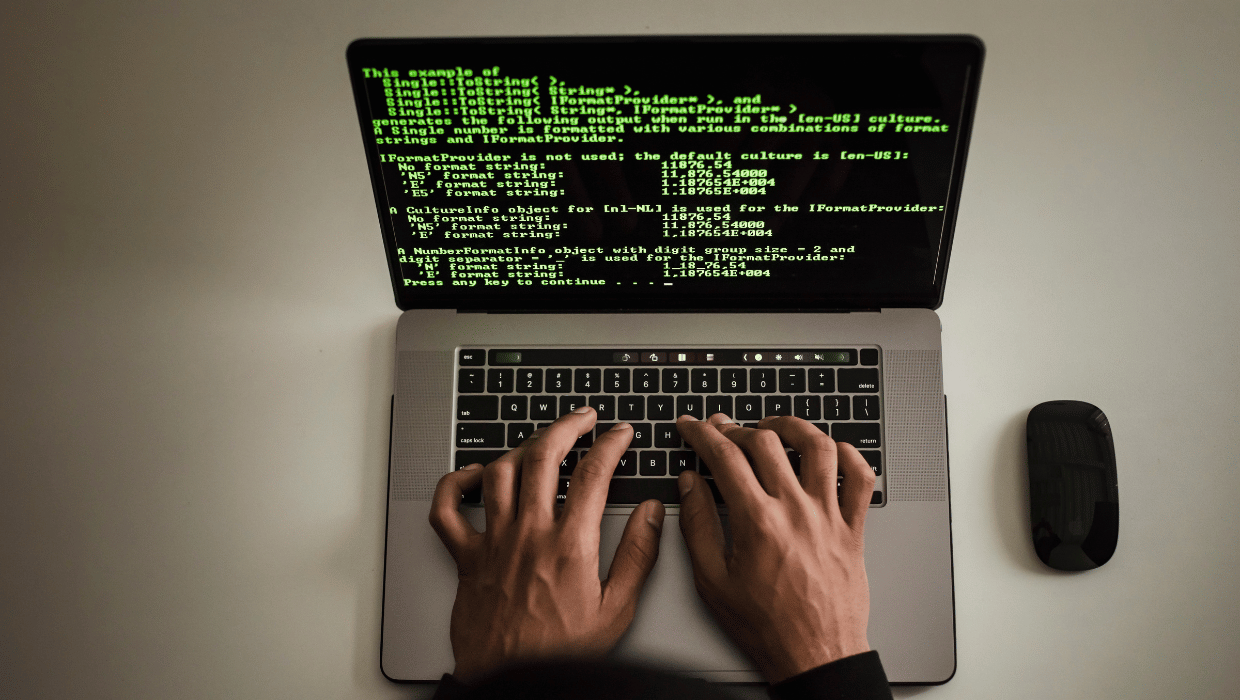Understanding NFTs
Before we get to the actual topic of custodial vs non-custodial NFTs, we should understand what NFTs are, and how they work.
NFTs, or nonfungible tokens, are encrypted assets on a blockchain that represent unique rare goods. Regular blockchain tokens, such as Bitcoin (BTC) and Ethereum (ETH), are virtually comparable to physical currency in terms of uniqueness.
Unlike BTC and ETH, NFTs have distinguishing metadata and identification codes that make each unique. The scarcity of NFTs creates high demand which causes prices to surge.
Virtual assets, real-world items, works of art, songs, video clips, in-game collectibles, sports cards, or even fashion goods and property are all examples of Non-Fungible Tokens. These things may be easily tokenized to generate digital certificates of ownership that can be bought, traded, and sold with NFTs.
Smart contracts and blockchain technology mean that NFTs can be sold more easily to a larger audience without the need for a middleman. Nonfungible tokens can be generated, bought, or given away. Digital asset ownership is typically represented by a crypto wallet containing NFTs.
Because NFTs are rare, one-of-a-kind, and can be expensive, it is crucial to manage and store them securely. If you want to buy or create an NFT, you first need a digital wallet.
NFTs are created through a process called minting. Minting means making a digital item unchangeable and unable to be tampered with as part of the blockchain. The process involves uploading content onto an NFT marketplace as a digital file and then paying a fee to mint crypto that represents the valuable asset. After that, this digital item can now be sold or traded as an NFT.
NFTs can be purchased just like any other digital asset. Purchasing NFTs allows collectors to store and confirm their ownership of digital items via blockchain technology.
Cryptocurrency wallet
A cryptocurrency wallet is a place where you can store your digital assets securely, including NFTs. Crypto wallets are an essential part of any blockchain system as they enable users to sign transactions, manage their balances, and access blockchain services.
Many NFT platforms use crypto wallets to eliminate the need to store account data, making transactions more accurate and secure. Two elements make up every crypto wallet: a public key and a private key. A public key is linked to the ownership of any digital asset. A cryptocurrency wallet’s public key is referred to as a wallet address, which serves as an identifier for the wallet similar to a traditional account number.
In contrast, a crypto wallet private key is more like a personal identification number (PIN-code) that secures the wallet. You use it to sign transactions and decrypt data, so at all times you must store it offline where only you can access it.
The security of a wallet is dependent on how much access to a private key is granted. All crypto assets and NFTs in a wallet may be stolen if a private key is lost, forgotten, or obtained by a third party such as crypto custodians.
There’s a lot of information about NFTs already, but custodianship isn’t often mentioned. Have you ever considered: Who has total control over the NFT you’ve just minted or purchased? When choosing a wallet and trading or generating NFTs on platforms, most non-custodial and custodial NFTs are encountered.
Custodial wallet – what is it?
A custodial NFT wallet is a type of cryptocurrency wallet where the private key is stored by a third party — known as a crypto custodian. This ensures that the asset holdings are safe and secure.
Some wallets, on the other hand, give users complete control and access to their NFTs, with full access to the private key. A custodial crypto wallet is a third party that keeps all sensitive data and assets for a user, such as a wallet’s private key, in a secure location. An NFT marketplace, exchange, or custodial wallet provider might be the third party.
Custody wallets are generally thought to be the most user-friendly and simple to create. Furthermore, because the third party retains the private keys, users do not have to remember or secure them. Users may effortlessly retrieve their accounts by requesting information from a third party at any time.
The primary downside to using a custodial wallet is a reduction in autonomy and potential loss of anonymity since many users are encouraged to fulfill Know Your Customer (KYC) requirements. Such verification often requires personal documents like passports or driver’s licenses.
Non-custodial wallets
A non-custodial cryptocurrency wallet gives the owner total control over the security of his or her crypto assets by keeping the private key offline.
A user who has a non-custodial NFT wallet has access to all of the money and operations. A private key is kept by the user and is not available to a third party. As a result, wallets are responsible for saving and safeguarding passwords, also known as mnemonic phrases.
Non-custodial wallets have the advantage of complete user control, as well as the ability to choose transaction fees. The default fee or a higher fee can be chosen depending on how fast transactions need to process. However, if a user loses or forgets their password, access to the wallet will be permanently unavailable.
The major disadvantage is that if users lose or forget the backup mnemonic phrase, they may permanently lose funds. Non-custodial wallets can also be less user-friendly for those who are unfamiliar with crypto jargon.
Users may store their NFTs in both custodial and non-custodial wallets, as long as the wallet supports the required NFT standard. The majority of ERC-721 and ERC-1155 for Ethereum blockchain and BEP-721 and BEP-1155 for Bitcoin Scrypt are used. Whether an NFT is custodial or non-custodial is decided by its token standard.
Not only is this standard cheaper because of its gas fees, but it’s also more affordable and accessible for users looking to mint an NFT. When deciding whether they want to store their NFT in a custodial or non-custodial wallet, users should always check the token standard first and make sure that their chosen wallet has a blockchain and NFT token standards.
NFTs marketplace
Nonfungible tokens, which can’t be replaced by another identical token and are therefore unique, can be minted, sold, or bought on NFT trading platforms. These platform types either hold the customer’s private keys (custodial) or don’t hold them (non-custodial).
There are many different types of NFT platforms available today, including mass and niche ones, self-service or invite-only platforms, gaming NFT platforms, and sports or music NFT marketplaces.
To start, all NFT marketplaces boast different features and capabilities. Most are located on the Ethereum blockchain but others reside on Binance Smart Chain (BSC), Polkadot, Solana, and Cosmos among other digital spaces.
There are custodial and non-custodial marketplaces. It’s worth noting that some NFT types may not be supported on certain platforms, particularly custodial ones since they have the option of what enters and doesn’t enter.
Censorship is a risk you take when selling NFTs on curated platforms. Marketplaces that don’t vet their users’ content have more room for creativity, resulting in a wider variety of NFT types including artsy virtual collectibles and fashion-forward music videos.
Custodial marketplaces provide security for users during a sale by fiduciarily holding onto conditional funds before the digital assets are exchanged. By using these platforms, investors can deposit their money with confidence that it is safe.
This is the case with Binance’s NFT marketplace and Nifty Gateway platforms, which operate as intermediaries. On these sites, interaction with other individuals is handled by the marketplace, which acts as an interface.
Non-custodial marketplaces enable direct connections between users, creators, and sellers without the need for KYC checks, thus preserving user freedom and anonymity. OpenSea and SuperRare provide access to others in a decentralized network that allows people to trade NFTs directly without the need for an intermediary.
Depending on a variety of criteria, such as whether they support a specific file format such as the Joint Photographic Experts Group, Graphics Interchange Format, or particular audio or video codec, NFT marketplaces may differ.
Other factors that play a role are how accessible the platform is (self-service or invite-only) and how much it costs to mint an NFT. Usually, users have to pay gas fees for creating a smart contract when they want to mint an NFT.
The purpose of this article is to help users understand the main differences between custodial and non-custodial NFTs, so they can make informed decisions about how to best secure and manage their portfolios.
In conclusion, it is readily apparent that custodial and non-custodial NFTs serve different purposes. Custodial vs. non-custodial has distinct implications for the value of an NFT, so choose wisely depending on your needs and preferences.
For example, a custodial NFT means that you no longer have to worry about managing private keys. However, this also means giving up some control over your NFTs. Non-custodial NFTs offer more security prospects, though support is limited.
If you lose control of your non-custodial NFT’s private keys, you’ll be unable to bid on it. Learn all there is to know about NFTs and select the one that best suits your needs.
Related Posts





